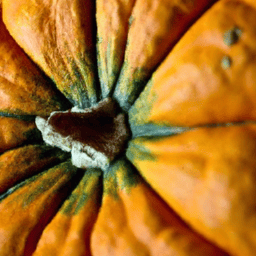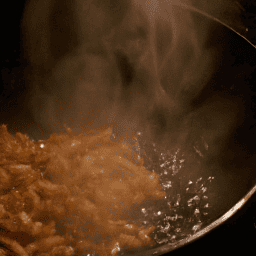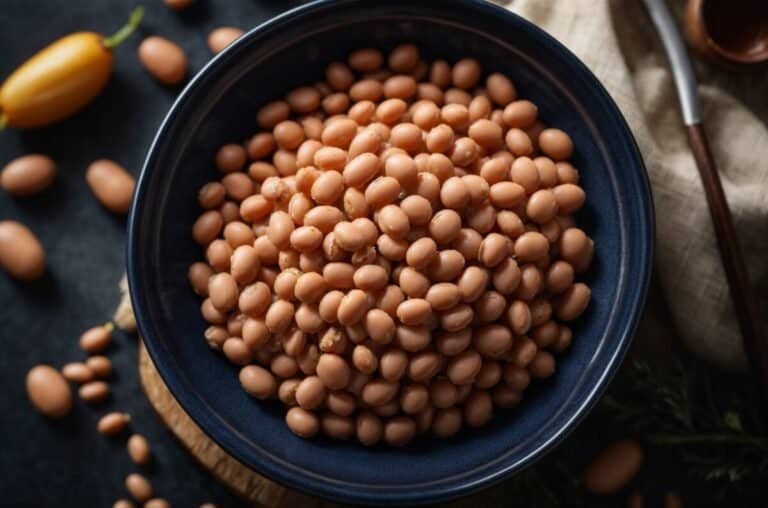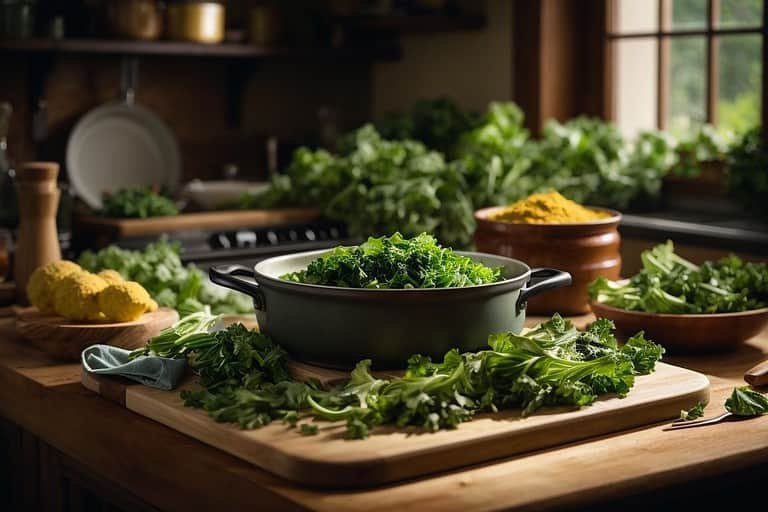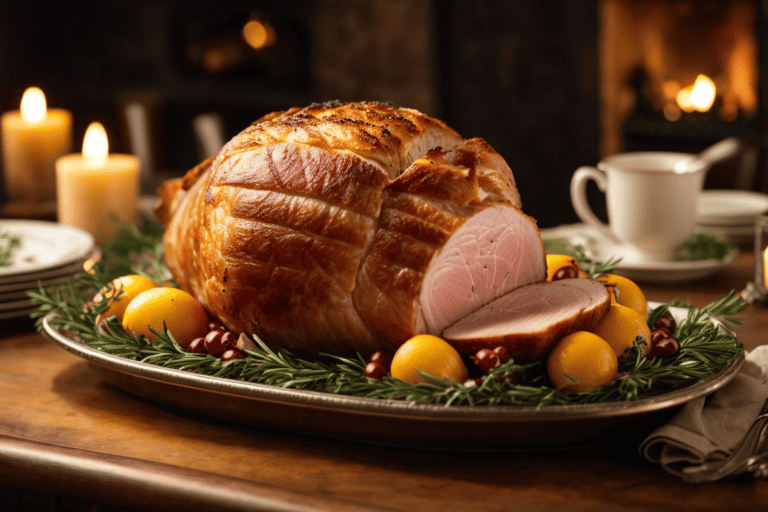How To Cook Kabocha Squash
Are you curious about how to cook kabocha squash? Look no further! In this article, we will guide you through the process of cooking this delicious and versatile vegetable. Discover the different methods you can use to prepare kabocha squash and learn about the various ways you can incorporate it into your meals. Whether you’re a seasoned chef or a beginner in the kitchen, this article will provide you with all the tips and tricks you need to create mouthwatering dishes with kabocha squash. So let’s get cooking and explore the wonderful world of kabocha squash!
Understanding Kabocha Squash
Kabocha squash is a versatile and delicious vegetable that is a staple in many Asian cuisines. It is often described as a cross between a pumpkin and a sweet potato, with a rich, sweet flavor and a dense, creamy texture. This vibrant orange squash is not only pleasing to the eye, but it also offers a variety of health benefits. In this article, we will explore the origins of kabocha squash, its nutritional benefits, and various ways to prepare and cook it.
What is Kabocha Squash
Kabocha squash, also known as Japanese pumpkin, is a winter squash that belongs to the Cucurbitaceae family. It is native to Japan but has gained popularity worldwide due to its unique taste and versatility in cooking. The word “kabocha” actually means “squash” in Japanese, highlighting its importance in their cuisine.
Kabocha squash is known for its distinctive appearance, with a dark green skin and a squat, round shape. The flesh is a rich, golden-orange color and has a smooth, velvety texture. Unlike some other types of squash, the skin of kabocha squash is edible and provides additional nutrients and fiber.
The Origins of Kabocha Squash
Kabocha squash has a long history in Japanese cuisine, dating back to at least the 16th century. It was introduced to Japan from Cambodia, where it is believed to have originated. Over time, kabocha squash became an integral part of Japanese cuisine, used in a wide range of dishes, from soups and stews to tempura and desserts.
In recent years, kabocha squash has gained popularity in other parts of the world, particularly in North America and Europe. Its unique taste and versatility in cooking have made it a favorite among both home cooks and professional chefs.
The Nutritional Benefits of Kabocha Squash
Kabocha squash is not only delicious but also packed with essential nutrients. It is a low-calorie vegetable, making it a great option for those watching their weight. Here are some of the key nutritional benefits of kabocha squash:
-
Vitamin A: Kabocha squash is an excellent source of vitamin A, providing more than 100% of the recommended daily intake in just one cup. Vitamin A plays a crucial role in maintaining healthy vision, boosting the immune system, and promoting cell growth.
-
Fiber: Kabocha squash is rich in dietary fiber, which aids digestion and helps keep you feeling full for longer. It is a great choice for those looking to increase their fiber intake.
-
Beta-Carotene: The vibrant orange color of kabocha squash is due to its high beta-carotene content. Beta-carotene is an antioxidant that helps protect the body against free radicals, reducing the risk of chronic diseases.
-
Vitamin C: Kabocha squash is a good source of vitamin C, which supports immune function and promotes collagen production.
-
Iron: Kabocha squash contains iron, an essential mineral that helps transport oxygen throughout the body and prevents iron deficiency anemia.
In addition to these nutrients, kabocha squash also provides a variety of other vitamins and minerals, such as potassium, calcium, and magnesium.
Preparing Kabocha Squash
Before you can start cooking with kabocha squash, it is important to know how to select, store, clean, and cut it properly. Here are some tips to help you prepare kabocha squash:
Buying and Storing Kabocha Squash
When choosing a kabocha squash, look for one that feels heavy for its size and has a firm, unblemished skin. Avoid squash with soft spots or mold. It is best to buy kabocha squash during its peak season, which is from late summer to early winter.
Once you have purchased your kabocha squash, store it in a cool, dry place, such as a pantry or cellar. It can be stored for up to a month if kept in optimal conditions. Avoid storing kabocha squash in the refrigerator, as the cold temperature can cause the texture to become watery and less flavorful.
Cleaning and Cutting Kabocha Squash
Before cooking with kabocha squash, make sure to wash the exterior thoroughly under running water to remove any dirt or debris. As mentioned earlier, the skin of kabocha squash is edible, so it is important to clean it properly to ensure food safety.
To cut kabocha squash, start by carefully removing the stem using a sharp knife. Then, using a sturdy knife, carefully slice the squash in half. Scoop out the seeds and discard them. From there, you can cut the squash into smaller pieces according to your recipe’s requirements.
Safety Tips When Handling Kabocha Squash
It is important to exercise caution when handling kabocha squash due to its hard skin and dense flesh. Here are some safety tips to keep in mind:
-
Use a sharp knife: A sharp knife will make it easier to cut through the tough skin and flesh of kabocha squash. Dull knives can slip and cause accidents.
-
Secure the squash: Place a damp kitchen towel or a non-slip mat underneath the cutting board to prevent the squash from moving around while you cut it.
-
Take your time: Cutting kabocha squash requires some strength and precision. Take your time and make sure to use proper cutting techniques to avoid injury.
By following these guidelines, you can safely and effectively prepare kabocha squash for cooking.
Basic Preparation Methods
Kabocha squash can be cooked using various methods, each one bringing out different flavors and textures. Here are three basic preparation methods that will help you incorporate kabocha squash into your meals:
Boiling Kabocha Squash
Boiling kabocha squash is a simple and quick method that retains its natural flavors and nutrients. To boil kabocha squash, follow these steps:
-
Start by cutting the kabocha squash into smaller, manageable pieces.
-
Fill a pot with enough water to submerge the squash pieces and bring it to a boil.
-
Add the kabocha squash pieces to the boiling water and cook until they are tender when pierced with a fork. This usually takes around 15-20 minutes.
-
Once the squash is cooked, drain the water and let it cool slightly before using in your desired recipe.
Boiled kabocha squash can be enjoyed as a side dish, mashed, or used as an ingredient in soups and stews.
Steaming Kabocha Squash
Steaming is another gentle cooking method that preserves the natural flavors and nutrients in kabocha squash. To steam kabocha squash, follow these steps:
-
Cut the kabocha squash into smaller pieces, removing the seeds and skin.
-
Place a steamer basket in a pot filled with a few inches of water.
-
Place the kabocha squash pieces in the steamer basket, ensuring they are not overcrowded.
-
Cover the pot with a lid and bring the water to a boil. Reduce the heat to low and steam the squash for about 15-20 minutes, or until it is fork-tender.
-
Carefully remove the steamer basket from the pot and let the squash cool before handling.
Steamed kabocha squash is a delightful side dish on its own or as an addition to salads, stir-fries, or grain bowls.
Microwaving Kabocha Squash
Microwaving kabocha squash is a quick and convenient way to cook it, especially when you’re short on time. Here’s how to microwave kabocha squash:
-
Cut the kabocha squash in half and scoop out the seeds.
-
Place one of the halves in a microwave-safe dish, flesh-side down.
-
Add a few tablespoons of water to the dish to create steam and cover it with a microwave-safe lid or wrap it tightly with microwave-safe plastic wrap.
-
Microwave the squash on high for 7-10 minutes, or until the flesh is tender.
-
Carefully remove the dish from the microwave using oven mitts, as it will be hot.
Microwaved kabocha squash can be pureed, used in soups, or enjoyed as a simple side dish.
Now that you have a better understanding of the various preparation methods, let’s dive into specific recipes and techniques to elevate your kabocha squash dishes.
How to Roast Kabocha Squash
Roasting kabocha squash brings out its natural sweetness and enhances its flavor. The caramelization that occurs during the roasting process adds depth and richness to the dish. Here’s how to roast kabocha squash:
Materials Needed for Roasting
- One kabocha squash
- Olive oil
- Salt
- Pepper
Steps for Roasting Kabocha Squash
-
Preheat your oven to 400°F (200°C) and line a baking sheet with parchment paper.
-
Cut the kabocha squash in half and scoop out the seeds.
-
Slice the squash into wedges or cubes, depending on your preference.
-
Place the kabocha squash on the prepared baking sheet.
-
Drizzle olive oil over the squash, ensuring each piece is coated evenly. Season with salt and pepper to taste.
-
Toss the squash gently, ensuring the oil and seasonings are well distributed.
-
Spread the squash evenly on the baking sheet, making sure the pieces do not overlap.
-
Roast the kabocha squash in the preheated oven for about 25-30 minutes, or until the edges are golden brown and the flesh is fork-tender.
-
Remove the baking sheet from the oven and let the squash cool slightly before serving.
Serving Suggestions for Roasted Kabocha Squash
Roasted kabocha squash can be enjoyed on its own as a side dish, or you can use it as an ingredient in various dishes. Here are some serving suggestions:
-
Add roasted kabocha squash to salads for an extra burst of flavor and texture.
-
Mash the roasted squash and use it as a filling for tacos, burritos, or quesadillas.
-
Puree the roasted kabocha squash and use it as a base for creamy soups or pasta sauces.
-
Combine roasted kabocha squash with grains, such as quinoa or couscous, for a hearty and nutritious meal.
-
Use roasted kabocha squash as a topping for pizzas or flatbreads for a unique twist.
Roasted kabocha squash is incredibly versatile and can be used in both sweet and savory dishes. Get creative and experiment with different flavor combinations to discover your favorite way to enjoy it.
How to Cook Kabocha Squash Soup
Kabocha squash soup is a comforting and nourishing dish perfect for chilly days. The natural sweetness of the squash pairs beautifully with warming spices and creamy textures. Here’s how to cook kabocha squash soup:
Ingredients Required for Kabocha Squash Soup
- One kabocha squash
- 1 onion, chopped
- 2 garlic cloves, minced
- 4 cups vegetable or chicken broth
- 1 cup coconut milk
- 1 tablespoon curry powder
- Salt and pepper, to taste
- Olive oil or butter for sautéing
Steps for Cooking Kabocha Squash Soup
-
Cut the kabocha squash in half and scoop out the seeds. Peel the skin and cut the squash into small cubes.
-
In a large pot, heat olive oil or butter over medium heat. Add the chopped onion and minced garlic, and sauté until softened and fragrant.
-
Add the chopped kabocha squash to the pot and stir to combine with the onion and garlic.
-
Pour in the vegetable or chicken broth, ensuring the squash is fully submerged. Bring the mixture to a boil, then reduce the heat to low and simmer for about 20-25 minutes, or until the squash is tender.
-
Using an immersion blender or a countertop blender, puree the soup until smooth and creamy. Be cautious when blending hot liquids to prevent splattering.
-
Return the soup to the pot and stir in the coconut milk and curry powder. Season with salt and pepper to taste.
-
Heat the soup over low heat until warmed through, stirring occasionally.
-
Serve the kabocha squash soup hot and garnish with fresh herbs, a drizzle of coconut milk, or a sprinkle of toasted pumpkin seeds.
Food Pairings for Kabocha Squash Soup
Kabocha squash soup pairs well with a variety of accompaniments that enhance its flavors and textures. Here are some food pairings to consider:
-
Crusty bread or garlic bread for dunking and scooping up the soup.
-
A dollop of creamy Greek yogurt or sour cream on top of the soup for added richness.
-
Toasted croutons or crispy bacon bits to add crunch and savory notes.
-
A sprinkle of fresh herbs, such as cilantro, parsley, or chives, for a burst of freshness.
-
A squeeze of lime or lemon juice to brighten the flavors.
-
A side salad with bitter greens, such as arugula or watercress, to balance the sweetness of the soup.
You can customize your kabocha squash soup by adding different spices, herbs, or even protein, such as shredded chicken or tofu, according to your taste preferences.
How to Cook Kabocha Squash in a Slow Cooker
Slow cooking kabocha squash is a hands-off method that yields tender and flavorful results. The gentle heat allows the squash to cook slowly, intensifying its sweetness and creating a melt-in-your-mouth texture. Here’s how to cook kabocha squash in a slow cooker:
Materials Required for Slow Cooking Kabocha Squash
- One kabocha squash
- Slow cooker
- Olive oil or butter for coating
- Salt and pepper, to taste
Steps for Slow Cooking Kabocha Squash
-
Cut the kabocha squash in half and scoop out the seeds. You can leave the skin on or remove it, depending on your preference.
-
Rub the cut sides of the squash with olive oil or butter, and season with salt and pepper to taste.
-
Place the squash halves, cut side up, in the slow cooker. If your slow cooker is too small to accommodate the whole squash, you can cut it into smaller pieces.
-
Cover the slow cooker with its lid and set it to low heat. Cook the squash for 4-5 hours, or until the flesh is tender and easily pierced with a fork.
-
Once the squash is cooked, carefully remove it from the slow cooker using tongs or a spatula. Let it cool slightly before handling.
Tips for Perfectly Slow Cooked Kabocha Squash
Here are some tips to ensure your slow-cooked kabocha squash turns out perfectly:
-
Choose a squash that fits comfortably in your slow cooker. If necessary, cut it into smaller pieces that can fit properly.
-
It is essential to coat the cut sides of the squash with a thin layer of oil or butter to prevent it from sticking to the slow cooker.
-
Avoid adding any liquid to the slow cooker when cooking kabocha squash. The slow cooker’s closed environment will provide enough moisture to cook the squash perfectly.
-
Resist the temptation to peek inside the slow cooker during the cooking process. Opening the lid releases heat and can prolong the cooking time.
Slow-cooked kabocha squash can be enjoyed as a side dish, mashed, or used as an ingredient in various recipes, such as soups, stews, or risottos.
How to Grill Kabocha Squash
Grilling kabocha squash imparts a delightful smoky flavor and creates a slightly charred exterior, adding a delicious layer of complexity to this versatile vegetable. Here’s how to grill kabocha squash:
Materials Required for Grilling
- One kabocha squash
- Olive oil
- Salt and pepper, to taste
Steps to Grill Kabocha Squash
-
Preheat your grill to medium-high heat.
-
Cut the kabocha squash into thick slices or wedges, removing the seeds and skin.
-
Brush both sides of the squash slices with olive oil. This will prevent sticking and help the squash caramelize on the grill.
-
Season the squash slices with salt and pepper to taste.
-
Place the squash slices directly on the grill grates. Close the lid and grill for 4-5 minutes per side, or until they develop grill marks and are tender when pierced with a fork.
-
Once the squash is cooked, transfer it to a serving platter and let it cool slightly before enjoying.
Grilled Kabocha Squash Serving Ideas
Grilled kabocha squash can be served in a variety of delicious ways. Here are some ideas to get you started:
-
Top grilled kabocha squash with crumbled feta cheese, toasted pine nuts, and a drizzle of balsamic glaze for a vibrant salad.
-
Toss grilled kabocha squash slices with a mixture of honey, cinnamon, and a pinch of cayenne pepper for a sweet and spicy side dish.
-
Serve grilled kabocha squash alongside grilled meats or seafood for a beautiful and nutritious meal.
-
Combine grilled kabocha squash with cooked quinoa or couscous and a variety of vegetables for a satisfying grain bowl.
-
Puree grilled kabocha squash with coconut milk and spices to create a flavorful and creamy soup.
Grilled kabocha squash is not only delicious on its own but also a fantastic addition to salads, grain bowls, and other dishes, adding depth and a unique smoky flavor.
How to Bake Kabocha Squash
Baking kabocha squash is a simple and hands-off method that results in tender, caramelized squash that is perfect for both savory and sweet preparations. Here’s how to bake kabocha squash:
Materials Required for Baking
- One kabocha squash
- Olive oil or butter for coating
- Salt and pepper, to taste
Steps for Baking Kabocha Squash
-
Preheat your oven to 375°F (190°C).
-
Cut the kabocha squash in half and scoop out the seeds. You can leave the skin on or remove it, depending on your preference.
-
Rub the cut sides of the squash with olive oil or butter, ensuring they are well coated. Season with salt and pepper to taste.
-
Place the squash halves, cut side down, on a baking sheet lined with parchment paper or aluminum foil.
-
Bake the kabocha squash in the preheated oven for about 30-40 minutes, or until the flesh is fork-tender.
-
Once the squash is cooked, remove it from the oven and let it cool slightly before handling.
Baked Kabocha Squash Serving Ideas
Baked kabocha squash is incredibly versatile and can be used in a variety of dishes. Here are some serving ideas:
-
Mash the baked kabocha squash and use it as a filling for ravioli or other stuffed pasta dishes.
-
Puree the baked squash with milk or cream, a touch of butter, and your preferred seasonings to create a silky-smooth side dish.
-
Incorporate the baked squash into baked goods, such as muffins, bread, or pancakes, to add natural sweetness and moisture.
-
Cut the baked kabocha squash into cubes and toss it with cooked grains, such as wild rice or quinoa, for a nutritious and satisfying salad.
-
Serve baked kabocha squash as a side dish alongside roasted meats or poultry.
The natural sweetness and creamy texture of baked kabocha squash make it an excellent addition to both savory and sweet dishes, allowing you to get creative in your culinary endeavors.
How to Stir-Fry Kabocha Squash
Stir-frying kabocha squash is a fantastic way to highlight its vibrant color and rich flavor. The quick cooking method allows the squash to retain its natural crunch, providing a delightful contrast to other ingredients. Here’s how to stir-fry kabocha squash:
Materials Required for Stir-Frying
- One kabocha squash
- Cooking oil (such as vegetable or sesame oil)
- Garlic, minced
- Soy sauce or tamari
- Optional additions: ginger, red chili flakes, toasted sesame seeds
Steps for Stir-Frying Kabocha Squash
-
Cut the kabocha squash into bite-sized pieces, removing the seeds and skin.
-
Heat oil in a wok or large skillet over medium-high heat.
-
Add the minced garlic and optional ginger or red chili flakes to the hot oil, and stir-fry for a few seconds until fragrant.
-
Add the kabocha squash pieces to the wok or skillet and stir-fry for about 5-6 minutes, or until they are tender-crisp. Stir occasionally to ensure even cooking.
-
Drizzle soy sauce or tamari over the stir-fried squash, tossing to coat evenly. Adjust the amount of seasoning according to your taste preferences.
-
Remove the stir-fried kabocha squash from the heat and garnish with toasted sesame seeds, if desired.
Stir-Fried Kabocha Squash Serving Ideas
Stir-fried kabocha squash can be enjoyed as a standalone side dish or incorporated into various recipes. Here are some serving ideas:
-
Combine stir-fried kabocha squash with other vegetables, such as bell peppers, snow peas, or broccoli, for a vibrant and nutritious stir-fry.
-
Toss stir-fried kabocha squash with cooked noodles and your favorite protein, such as shrimp or tofu, for a quick and satisfying meal.
-
Use stir-fried kabocha squash as a topping for rice bowls, bibimbap, or tacos for an extra burst of flavor and texture.
-
Stir-fried kabocha squash pairs well with a variety of Asian-inspired sauces, such as teriyaki, hoisin, or sweet chili, for a delightful glaze.
The possibilities are endless when it comes to stir-frying kabocha squash. Get creative and experiment with different seasonings and pairings to create your own delicious stir-fry dishes.
How to Store and Preserve Cooked Kabocha Squash
If you have leftover cooked kabocha squash or want to make a large batch for future use, it is important to store and preserve it properly to ensure its quality and flavor. Here are some tips for storing and preserving cooked kabocha squash:
Storing Kabocha Squash in the Refrigerator
Cooked kabocha squash can be stored in the refrigerator for up to 3-4 days. Follow these steps:
-
Allow the cooked squash to cool completely before storing.
-
Transfer the squash to an airtight container or wrap it tightly in plastic wrap.
-
Label the container with the date and contents to keep track of freshness.
-
Place the container in the refrigerator, preferably in the main compartment rather than the crisper drawer.
When you’re ready to use the stored kabocha squash, reheat it gently in a microwave or on the stovetop until heated through.
Freezing Cooked Kabocha Squash
If you want to preserve cooked kabocha squash for an extended period, freezing it is the best option. Follow these steps:
-
Allow the cooked squash to cool completely before freezing.
-
Cut the squash into suitable portions or puree it, depending on your intended use.
-
Place the portions or puree into freezer-safe containers or resealable freezer bags. Remove any excess air and seal tightly.
-
Label the containers or bags with the date and contents.
-
Lay the containers or bags flat in the freezer to allow for easy stacking and efficient use of space.
Cooked kabocha squash can be frozen for up to 3-4 months without significant loss of quality. When you’re ready to use the frozen squash, thaw it in the refrigerator overnight, and then reheat it using your preferred cooking method.
Reheating Frozen Kabocha Squash
To reheat frozen kabocha squash, follow these steps:
-
Thaw the frozen squash in the refrigerator overnight.
-
Once thawed, transfer the squash to a microwave-safe dish or saucepan.
-
Reheat the squash gently in the microwave or on the stovetop until heated through, stirring occasionally.
-
Make sure the squash reaches a safe internal temperature of 165°F (75°C) before consuming.
Reheated frozen kabocha squash can be used as a side dish, added to soups or stews, or incorporated into various recipes.
By following proper storage and reheating techniques, you can enjoy the goodness of kabocha squash even after it has been cooked, allowing you to make the most of this versatile vegetable.
In conclusion, kabocha squash is a delightful and nutritious vegetable that can be enjoyed in a variety of ways. Whether you choose to boil, steam, microwave, roast, cook in a slow cooker, grill, bake, or stir-fry kabocha squash, you’ll be astounded by its rich flavor and pleasing texture. Experiment with different spices, herbs, and cooking methods to discover your favorite way to prepare and serve this versatile vegetable. Plus, with proper storage and preservation techniques, you can enjoy the goodness of kabocha squash long after it has been cooked. So go ahead and introduce this vibrant and delicious vegetable into your culinary repertoire, and embrace the wonderful world of kabocha squash!

